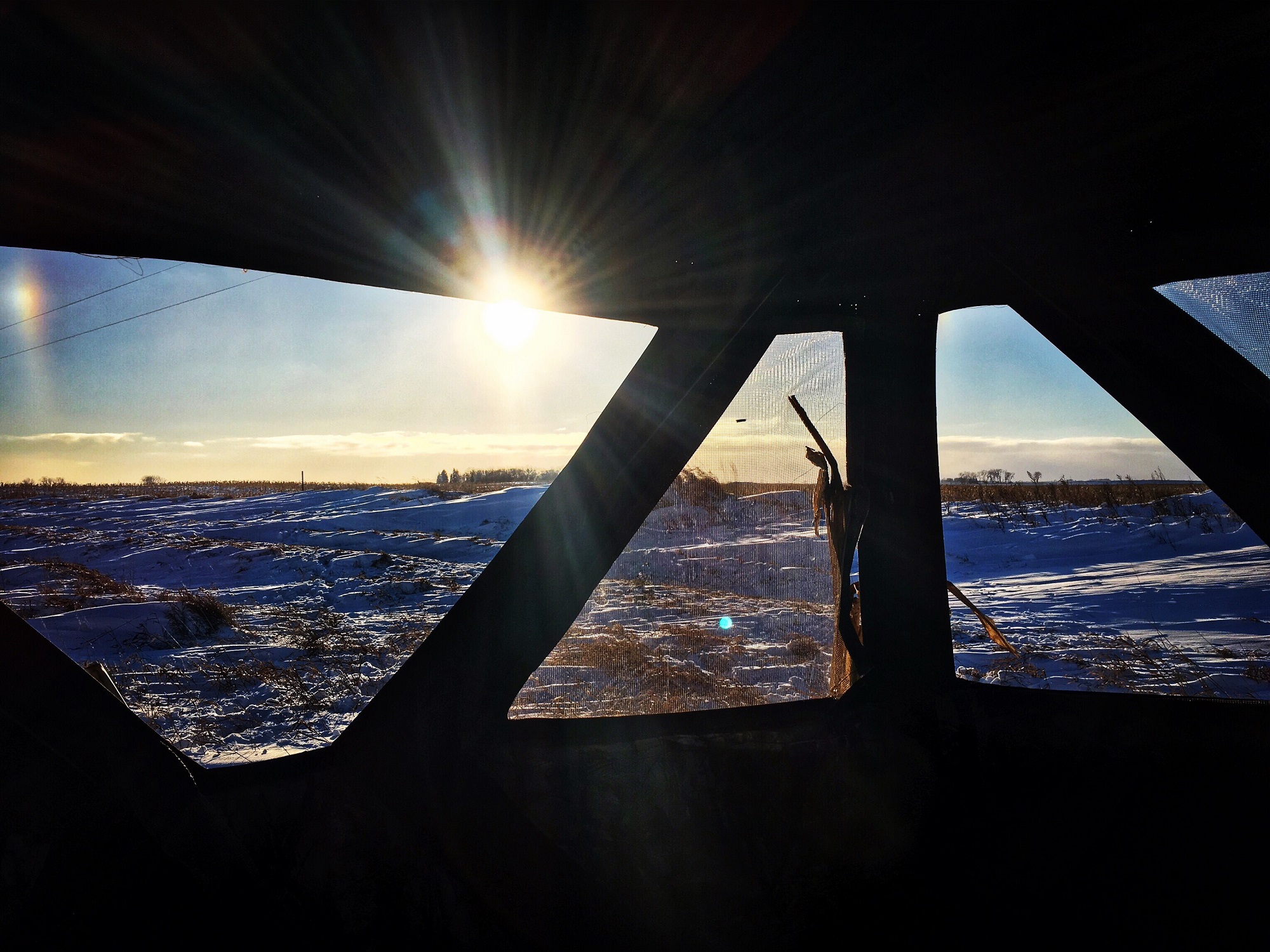For most of the whitetail region, hunting the late season can be drastically different than any other time of the year. Cold temperatures, high winds, snow, and what can be downright miserable hunting conditions can produce some of the best hunting of the year. So how do you attack late season hunting? It all depends on where and what type of property you can hunt.
Late Season Food
The first thing that comes to mind when thinking about late season hunting is food. Food more or less dictates a whitetail deer’s life in December and January. Bucks are worn down from the rut and need to pack on weight to withstand the torments of winter. So the question then becomes, how do you attack your hunting property if you want to focus on food? There are a few different types of food sources that stick out to me, and what you can hunt will end up deciding where you should focus your hunting efforts.

Ag Land
If you have the ability to hunt any type of ag such as corn, beans, or wheat this can be absolutely money. Scout inside corners of fields near thick bedding cover as deer don’t want to move very far to eat. In a perfect world, you’ll have some snow to gauge deer traffic as well. If you have the ability to hunt standing crops, this is a no-brainer. Even if you can’t actually hunt the standing crops, maybe you have the ability to hunt travel areas leading to the standing crops.
In 2016, this scenario played out perfectly for me. It was early December in North Dakota, and we had a severe cold front move through, dropping the temps far into the negatives. In North Dakota, you can legally hunt non-posted land, and I had been clued into a property that might produce. It was right next to a standing corn field that had been left for whatever reason and what made the property so good was a small pocket of thick timber that deer were bedding in. I set up a blind in a corn stubble field between the bedding and standing corn and had no idea what to expect. Over the course of the next hour, I saw over 70 deer and ended up shooting a beautiful mature nine pointer. With the wind chill, it was pushing negative 30 degrees. It was one of the coldest sits in my life, but it made deer flock to the best food source around, and the plan couldn’t have worked out any better.
You can watch the hunt here.
Food Plots
If you own or are able to plant any type of food plot, don’t forget about planting late season food. It’s easy to forget about when planting in the summer, but if you do and don’t fill a tag earlier in the fall, you might regret it come this time of year. Brassicas, turnips, or even planting corn/beans and leaving them stand can be a great bet. At the end of the day, you’re trying to get deer to stick around on your property as much as possible and often times that means they will be where the best food is.
Natural Browse
So, what if you can’t hunt food plots or ag, or maybe you don’t even live in an area conducive to planting? Maybe you hunt the northern big woods and need to get creative. This is where I like to do a lot of scouting and then once I find good deer sign, I’ll set up and hunt it. Look for clear cuts that have been cut in the last couple of years. These are great areas to find a lot of browse as there isn’t much for food in mature forests.
Bedding
If you can’t find quality food or don’t have quality food on the property that you can hunt, the next thing I’m looking for is the thickest, nastiest bedding cover possible. And it doesn’t have to be very big. When it’s cold, snowy and windy, there are good odds a mature buck could be holed in some type of thick bedding cover. A form of late-season bedding cover that I really like is small cedar trees, either in CRP or around some type of swamp.
A good example of this is a hunt I had from last year. I knew of a thick cedar swamp and thought it would be a good place to check out late in December. As I neared the thick cedar swamp, I started noticing a ton of deer tracks coming out of it. Right away, I found a good spot to tuck into the brush and sit on the ground. That night I saw a number of deer come out of the cedar swamp, but it was all in the last fifteen minutes of daylight. Had I not been tucked in close to bedding, I wouldn’t have seen all of those deer.
Conclusion
To be successful hunting during the late season, it’s not always as simple as locating pinch points or funnels as you might do during the rut. You need to find the best food available and if that doesn’t pan out, scout for the best bedding possible. December and January hunts can be miserable, but if those conditions result in a big buck down, they are well worth it.






